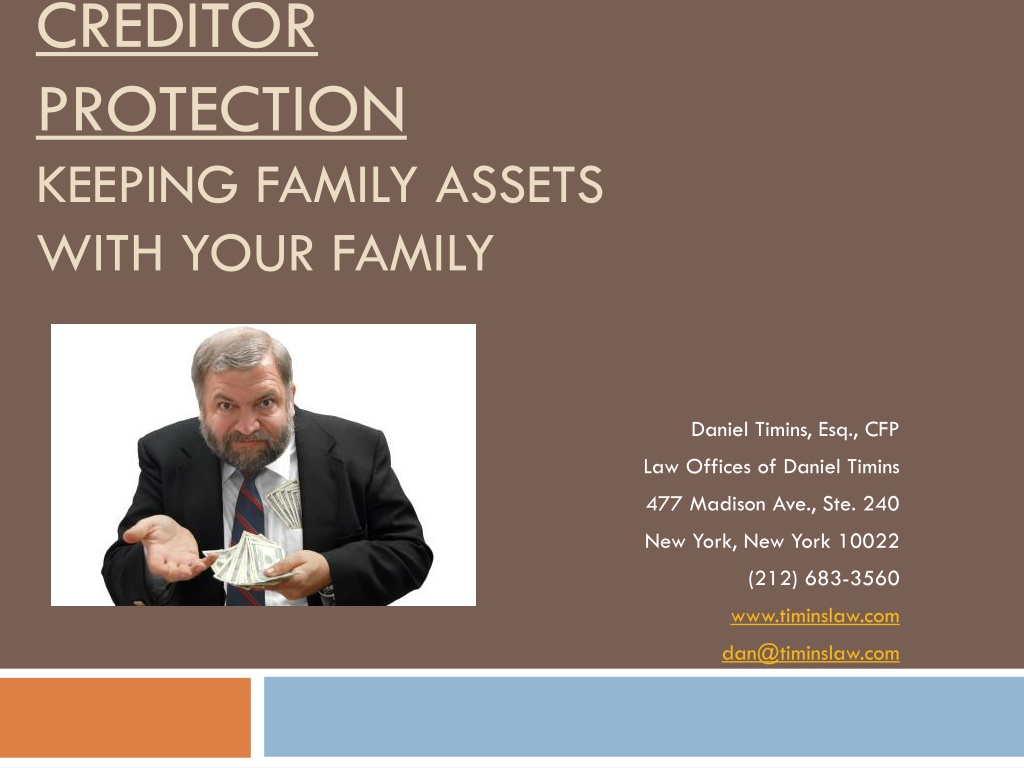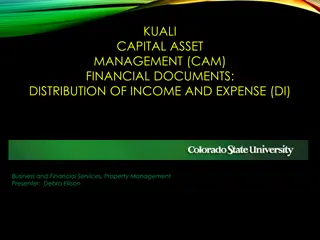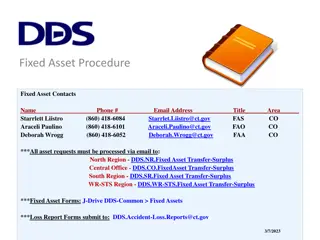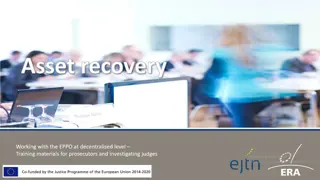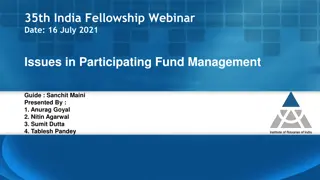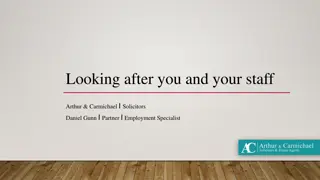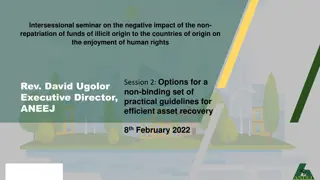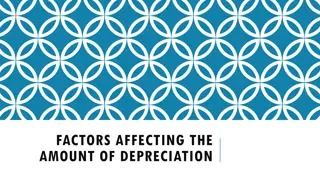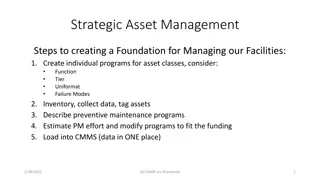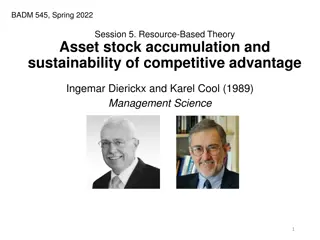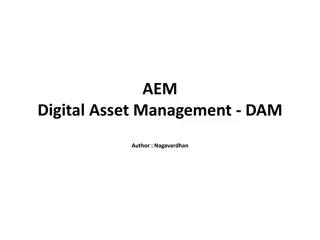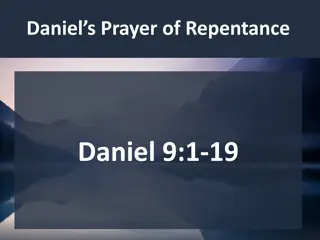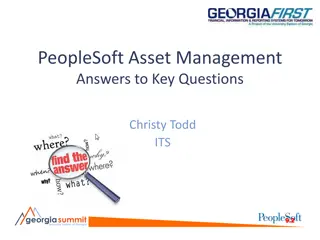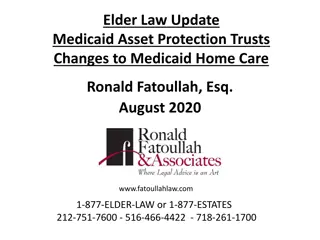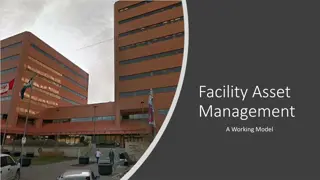Asset Protection Strategies for Families: Tips and Insights by Daniel Timins, Esq.
Learn about important asset protection strategies for families, including safeguarding assets from creditors, understanding the protection of Social Security benefits, navigating retirement plan implications in divorce cases, preventing fraudulent conveyances, and identifying creditor protections in private retirement plans. Gain valuable insights and tips on managing your family assets effectively.
Download Presentation

Please find below an Image/Link to download the presentation.
The content on the website is provided AS IS for your information and personal use only. It may not be sold, licensed, or shared on other websites without obtaining consent from the author. Download presentation by click this link. If you encounter any issues during the download, it is possible that the publisher has removed the file from their server.
E N D
Presentation Transcript
CREDITOR PROTECTION KEEPING FAMILY ASSETS WITH YOUR FAMILY Daniel Timins, Esq., CFP Law Offices of Daniel Timins 477 Madison Ave., Ste. 240 New York, New York 10022 (212) 683-3560 www.timinslaw.com dan@timinslaw.com
Social Security: Your Most Protected Asset, if Creditor Protection Before distribution After distribution Exceptions Spousal Maintenance & Child Support Federal crime claims Federal Taxes (state taxes are exempt) TIPS Separate SS accounts from other moneys
New York Marital Dissolution Family Court is a court of Equity Retirement plans are fair game to divorcing spouse Not all retirement plans are included under Right of Election 403(b) plans Former federal employee plans NOT revoked upon divorce TIP: change bene forms after divorce! New York employee s retirement plans fully included under Right of Election Also fully available to US government tax collection Revoked upon divorce, EPTL 5-1.4
Fraudulent Conveyance Every conveyance made and every obligation incurred by a person who is or will be thereby rendered insolvent is fraudulent as to the creditors without regard to his actual intent if the conveyance is made or the obligation is incurred without fair consideration NY denies retirement plan protection whose contributions violate the rules NY restriction does not apply to federal employee retirement plan protections
Private Retirement Plans: Private Creditor Protections Assets & income protected: Roth & Traditional IRAs Keogh & corp plans funded by trusts Rollovers from these plans 457 Plans NO protections: Private annuities Federal, NY and local government plans (other than 457 plans)
Private Retirement Plans: Exclusions from Protection Owner s IRA Not Protected when: Federally qualified QDROs for divorces Federal criminal fines and restitution Federal taxes (but is protected from state taxes) Fraudulent conveyances Inherited IRAs NO creditor protection for bankruptcy Probably not for other creditors TIP: Have IRA beneficiary be a See Through Trust with bene not acting as sole trustee
Trusts Revocable Trusts NO protection for Creator / Grantor Future Beneficiary: Limited protection if beneficiary is current sole Trustee, has ability to name any Successor Trustee, or is the Trust Protector No fraudulent conveyance for a future beneficiary unless he is the source of funding Irrevocable Trusts: If no Fraudulent Conveyance TIP: Settlor cannot have any control over Trustee or naming of Trustee TIP: Asset protection trusts out of state may provide jurisdictional hurdles for creditors TIP: Moving out of state may pose an additional hurdle to perfected creditors
SLATs for Asset Protection Third party spendthrift trust is protected from creditors. If trust is a discretionary trust creditor cannot force trustee to make distribution. Donor spouse might have indirect access to assets in SLAT if distributions to beneficiary spouse are used for mutual benefit. This is a third party trust that should be protected from creditors. Risks are of divorce, or that beneficiary spouse pre-deceasing. Address divorce by using a floating spouse clause. Give a disinterested third party a LPOA to appoint property back to donor spouse. Death can be addressed with LPOA to spouse or third party to appoint back to donor s spouse or have life insurance to compensate for loss of access.
Powers of Appointment as Asset Protection Tools When, however, you hold a GPOA, the property subject to the power may be subject to the power/reach of the donee of the powers creditors. Historic doctrine no title in donee until exercises power. So until actually exercised it is not available to creditors. Many states have changed this rule, e.g. NY 10-7.2 EPTL Bankruptcy Code provides that GPOA, since can be exercised for benefit of debtor, is included in bankruptcy estate. Mother, instead of bequeathing outright instead gives heir a GPOA which will be exercised only if no creditors. If you live in jurisdiction that has modified the historic rule then you have mom give LPOA or give to another person, example daughter in law LPOA with power to appoint to a class of persons that include son. Daughter in law can appoint property to son as he wants to use it and if no creditors at that time. It is not reachable by wife s creditors since she only holds a LPOA. Why go through this instead of giving outright to daughter in law? She may have her own creditors.
Disclaimer as Asset Protection Tool Typically viewed as an estate tax planning tool but can be effectively used as an asset protection tool. Parent bequeaths assets outright to son and if son predeceases to son s descendants. Father dies and son is subject to large judgement. If does not disclaim creditors will take all Son disclaims to avoid creditors receiving property and property passes to sons children. Disclaimant has right to disclaim and it is legally as though that disclaimant predeceased (relation back doctrine under common law) so creditors lien cannot attach and it is deemed as if property transferred from father to grandchildren above. Property passes as if never received by disclaimant. Exceptions: NY precludes use of disclaimer if disclaimant is solvent. NY prohibit disclaimers for Medicaid.
Non-Qualified Annuities Protection varies for New Yorkers in Bankruptcy: Statute states all proceeds are protected, and cannot force owner to take benefits or how to take benefits BUT court states it may make annuitant pay installments or a portion of policy based on annuitant s financial position Max of $5,000 protected if debtor declares bankruptcy within 6 months of funding the annuity
Life Insurance Owner's interest in proceeds and cash value of policy insuring another: Exempt as against creditors of insured (and owner's own creditors if insured is owner's spouse). Beneficiary's interest in proceeds and cash value: Wholly protected from all creditors provided beneficiary is not owner or insured.
Spousal Transfers Transferor MUST surrender all rights to control the assets AND any certainty transferor can enjoy its benefits Undesirable if there is a divorce or death of spouse Constructive Trust doctrine can lead to creditor attachment Court can still unwind a fraudulent conveyance Tenants by Entirety 5 unities required to create T by E: Time, title (same instrument), interest (must be same in property), possession and marriage. Spouses must join together to sever interests in property. Neither spouse can do this unilaterally cannot unilaterally alienate property. So creditor of one but not the other cannot reach property. In New York: Only applies to Real estate Non-creditor spouse gets property free-and-clear once period of debt expires Creditor claim is only a problem if debtor spouse dies second If tenancy is severed (ex: Divorce) creditor can go after property TIP: Non-debtor spouse should transfer home to surviving debtor spouse using a trust
LLCs / Limited Partnerships LLCs / LPs Must have a valid business purpose Must ensure assets are owned by the LLC Disregarded status of sole member LLCs does not affect limited liability Wyoming and Nevada have Charging Order as sole creditor right
